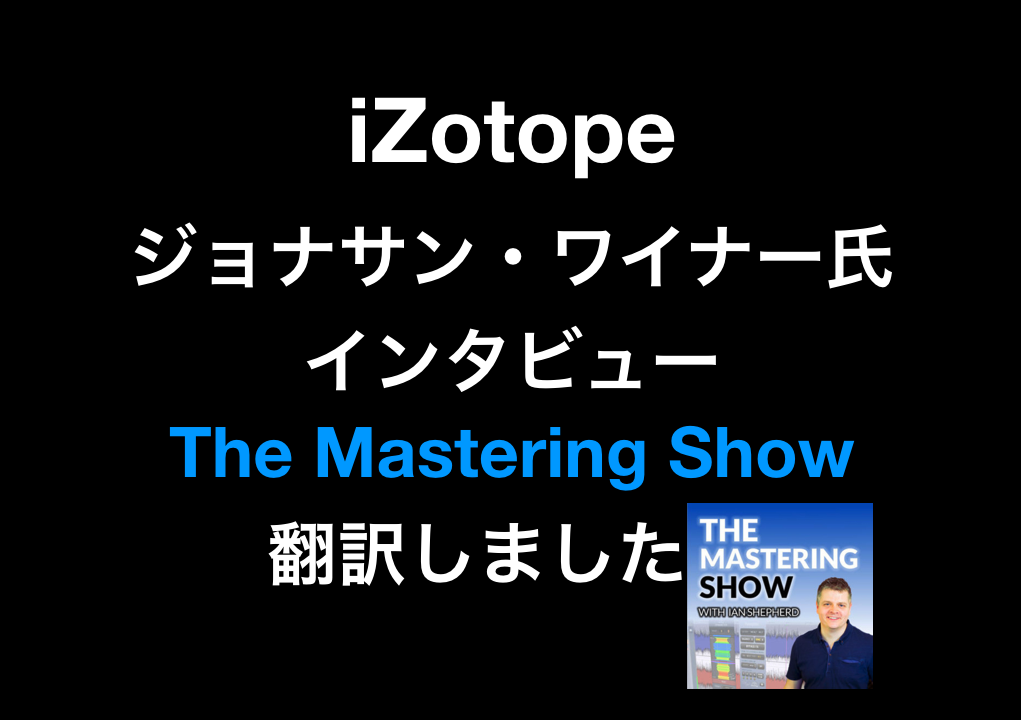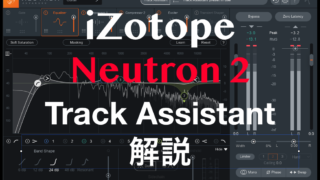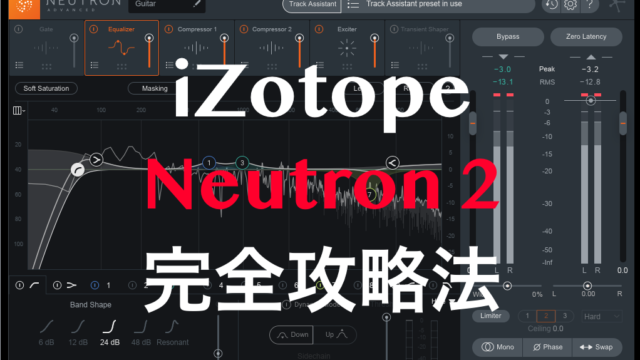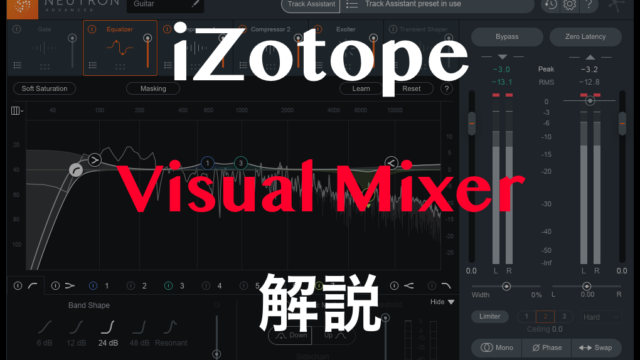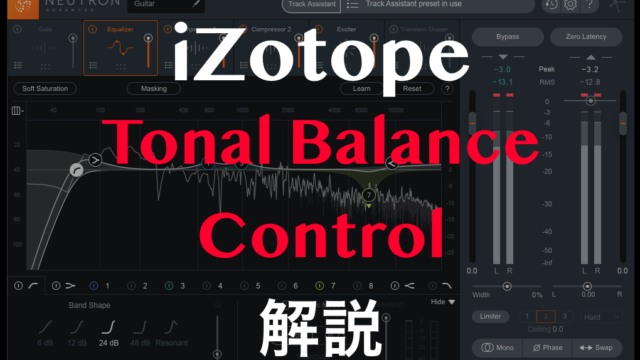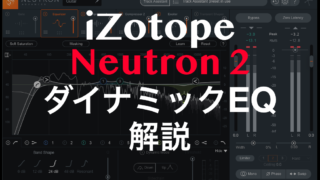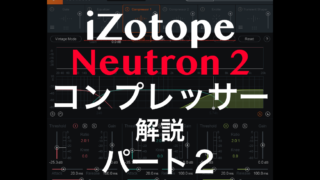今日も、iZotope製品を勝手に紹介します!w
とは言ったものの、今回は、ポッドキャストの紹介です。
DTM系のポッドキャストは、アメリカにも、なかなか無いんですよね。その中でも、このThe Mastering Showは、マスタリングに特化したポッドキャストで、かなり聞きごたえあります。
もう何年も聞いていて、これだけを聞いても、にわかにマスタリングの全容が知れるっていう。。w
僕は、エンジニアでも、ましてやマスタリングエンジニアでもありません。
ただ、CoCo壱を食べてるDTMerです。。。
なので、DTMer目線での感想ですので、あしからず〜!
AI機能が気になる!って人は、参考になると思いますよん。
先日、大盛況のまま終わったiZotopeのセミナーのために、来日されていたJonathan Wyner氏ですが、iZotopeのEducation Directorという肩書きを持っています。
マスタリングエンジニアとしても、世界的に有名な地位を確立しており、バークリー音楽大学でも教鞭を執るなど、多方面で大活躍されている、とても権威のある方です。
今日は、このポッドキャストの#45で放送された、Jonathan Wyner氏のインタビューを、要点を絞って紹介します。
完全に個人的にいいと思ったところのみ抽出した、ダイジェスト版です。
いいですか、、、個人的!!!にです。笑
全部知りたいって人は、こちらで聴いて下さいな!
Neutron 2のAI機能についてはこちらから↓
Nectar 3のAI機能についてはこちらから↓
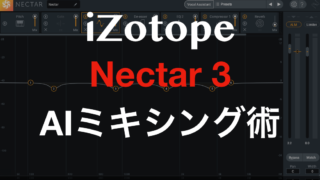
テクノロジーの進化について
まず、テクノロジーの進化についての話から。
彼は、エンジニアとして働き出したのが1983年なので、テクノロジーの変化をずっと見てきた人です。
その彼が、テクノロジーの進化について、そしてどう接していけばいいのか、ということを話しています。
ポイント
- テクノロジーの変化は、避けられない
- 昔に比べ、たくさんのプロセシングを行っても、ノイズなどの音的な問題が減った
- テクノロジーの進化を感じたのが、Lookahead Limiter。アナログ機器は、インプット信号の調節(ゲインステージング)が非常に大事だが、デジタルになって、その幅が大きくなり、レベルをかなり上げてもよくなった。(実際にいい音か、と言うのは別の話)
- 現在最も求められるのは、状況を読む力。近年のラウドネスの問題や、クライアントが欲しいと思えるプロダクト、様々な事を考慮した上で、テクノロジーと接する事。そして、それでいい音に出会えるなら、それは最高のテクノロジーとなる。
こちらが、Transrciptです。17:48くらいからです。
”It is inevitable as time goes on, the technology improves so that we can use a heavier hand in signal processing with fewer artifacts than we used to be able to.
The moment was when we started having the lookahead limiter. Before we had digital limiter in early 90’s, if you pushed as much level into an analog limiter as we do now, it would sound horrible. Nobody would listen to it. And then the digital limiter came along and you could. We can debate whether or not the artifact of it is unpleasant or how far is too far and all of that, but the fact that of the matter is that you can push level more than you used to be able to and it doesn’t sound as bad. So the technology is always going to let us do more interesting things.
You gotta take everything you’re doing in context. Artistic context (intent), level as it relates to loudness and loss of dynamics, that’s something that needs to be managed in a way it helps the music as opposed to hurt it. And there’s another bunch of other issues like what the clients want but we have to understand in context of what we’re doing and when you understand it, when you’re doing the good work that sounds good, having a great tool is awesome! You’d rather cut a piece of cheese with a sharp knife than the blunt instrument.”
iZotope AI機能について
気になるところですが、こちらの説明も、iZotopeの公式の通りの説明で、納得のいくものでした。
ポイント
- AIの目的は、アシスタントであって、プロセスを完全自動化するものではない
- AIは2つの事を可能にしてくれる。スタート地点の提供と、ミックス・マスタリングの処理方法を教えてくれる存在だ、ということ
- AIが、どういったアプローチをするのか、それを見て勉強するのはアリ
- クリエイティブな作業ができるか、それはあなた次第
こちらが、Transcriptです。30:30辺りからです。
”The intention behind the AI is to offer you an intelligent starting point. There’s a very strong commitment to the idea that an assistant should help you with tasks that are easily quantifiable to get you to the good starting point and to leave you at a point where you can start making more interesting and creative decisions, and maybe teach you something about the track that you’re working with. But it’s meant to be assistive and not meant to be automated. People are sometimes inclined to think about this as an automated tool or assistive tool as automated or taking away choices or doing things for us,and that’s absolutely not the intention. I would not suggest that somebody rely on Master Assistant to master the record. It is a great way to get to the great starting point, to get initial thoughts about overall tonal shift, level set.”
Jonathan Wyner氏が勧めるAI機能の使い方
まず、Jonathan Wyner氏は、iZotopeのEducation Directorではあるけど、iZotopeの製品だけを使っている訳でない、とハッキリ言っています。
その中で、AIの使い方について言及していたので、紹介します。こちらは、OzoneのMaster Assistantの話になります。
ポイント
- 音量レベルが一番高い箇所でMaster Assistant機能を発動
- EQのセッティングは、参考にするけど、オフ
- このAIが自分より優れてると思ったのは、Dynamic EQの設定。ピークポイントを教えてくれ、後のリミッターが、最適なレベルで稼働してくれる
- 結論を言うと、Dynamic EQ、リミッターだけを使用
Transcriptです。上の話の続きになってます。31:40くらいからです。
”And probably the most interesting thing that the Master Assistant does is that, something that I actually rely on the Master Assistant and not to try to do it myself because it’s so good at it, it parks dynamic EQ before the final limiter to pull down some of the resonant peaks in the level of the track before it gets to the limiter so that limiter isn’t working as hard. It’s a neat way to think about the interaction between the input signal and the limiter.
When I use it, I will run it on the track. It’s important that you run it on a fairly dense section of the track so that the limiter is dealing with something that’s top of the dynamic range as opposed to lower because otherwise it’s gonna suggest way too much level into the limiter.
It looks at the level, sets the dynamic EQ. It will apply compression only if there’s a real abration in terms of dynamic range. I would say 80 or 90% of the time, it turns off compression then suggests broad blush stroke EQ. I will listen to the EQ, sometimes I just turn it off or I might find it interesting as a suggestion to what to do but I will turn that off and then pick up from there. I’ve got this preset thats customized for my audio between the limiter and the dynamic EQ, and it’s quite useful.”
まとめ
約50分くらいあるポッドキャストを1分半くらいにまとめました。笑
もっといろんな話があったのですが、AIのところが一番気になったので、そこをまとめました。
みんなもそこでしょ、気になるのは!!笑
Jonathan Wyner氏が、実際にどうiZotope製品と向き合って、どう使っているのか、少しだけですが、参考になれば幸いです。
最後に、今回The Mastering ShowのIan Shepherdさんに、ブログで紹介してもいいか、と確認したところ、こころよく快諾して頂けたので、この場を借りてお礼申し上げます。
I would like to give a quick shout out to Mr. Ian Shepherd for letting me introduce his amazing podcast. You’re proof of the idea that the more successful you get, the better a person you’ll become. Thanks again for all of your support and hopefully this is the first one of many!
それでは、今日はこの辺で。
またねん!
Takeshi
オフィシャルウェブサイトのリンクはこちら↓
購入したい!っていう賢者の方はこちらへ↓

